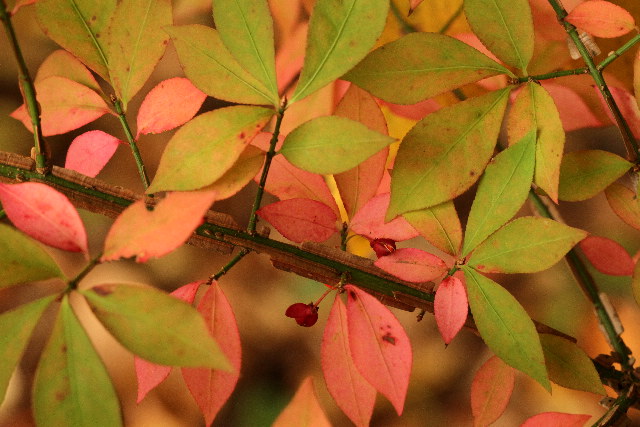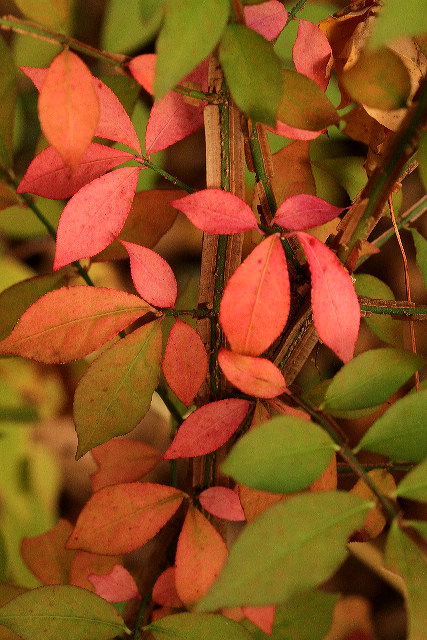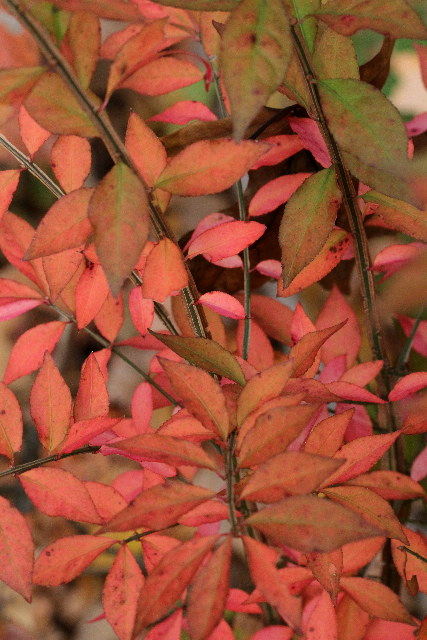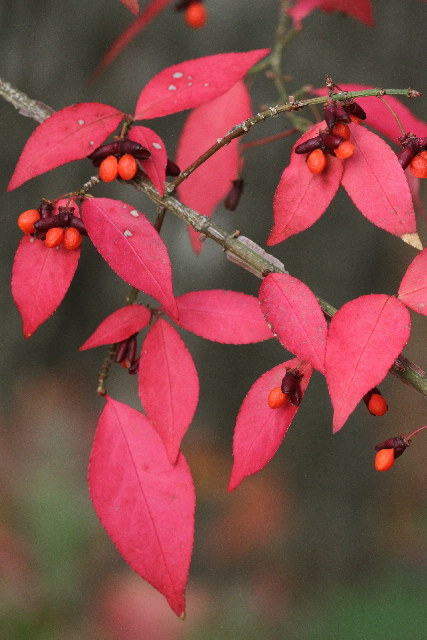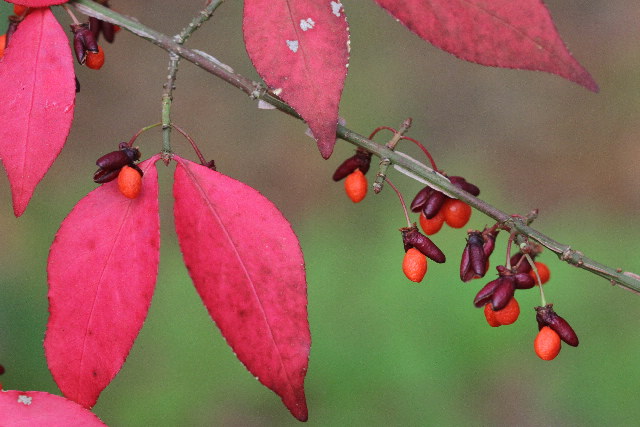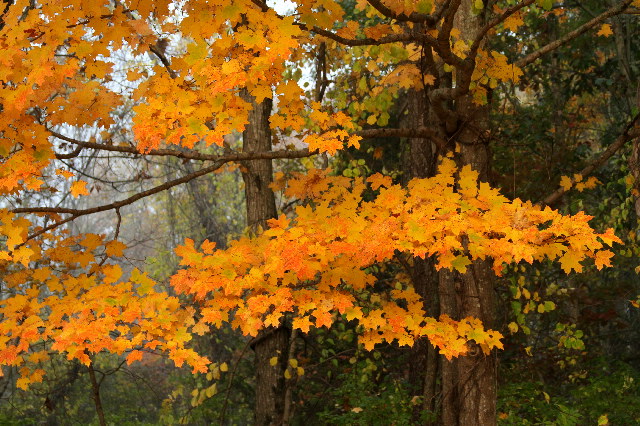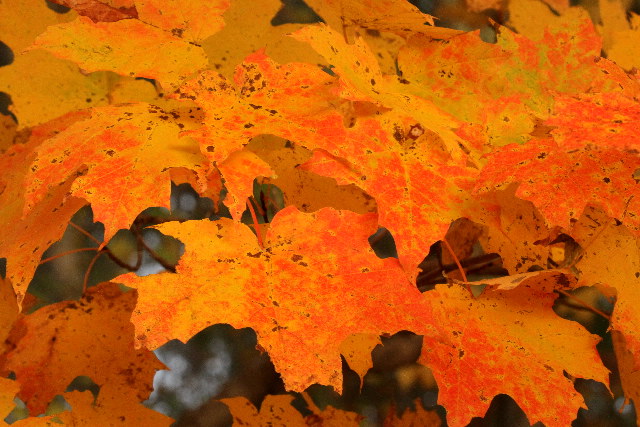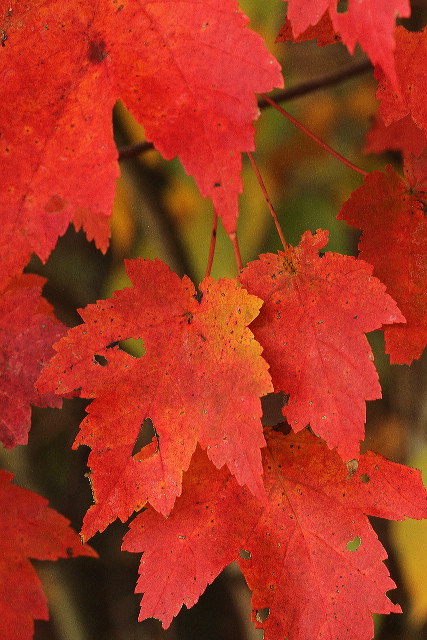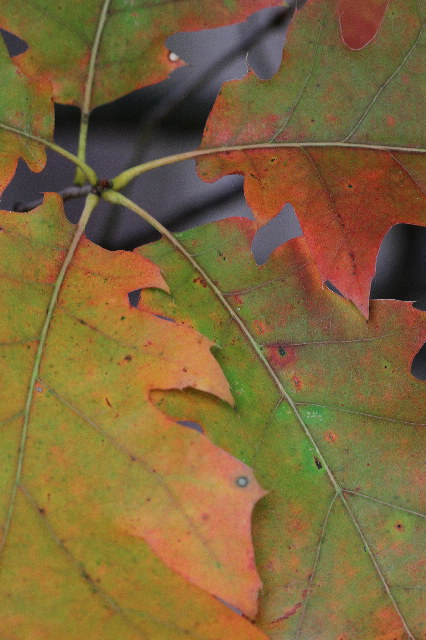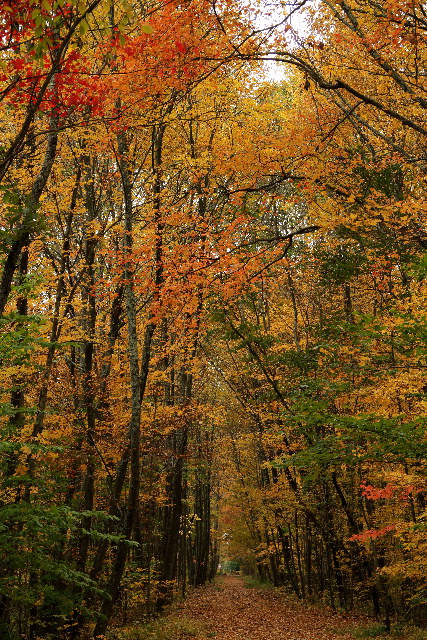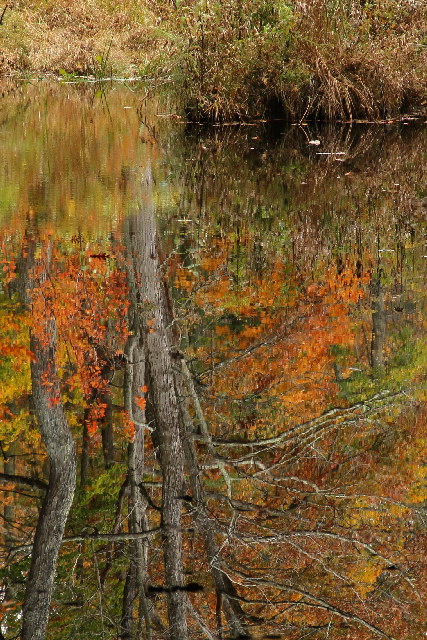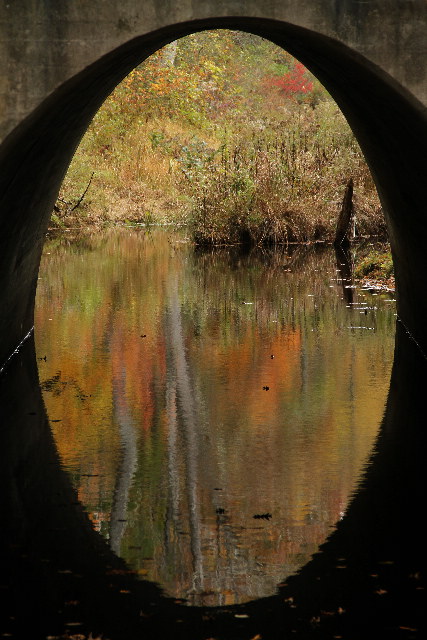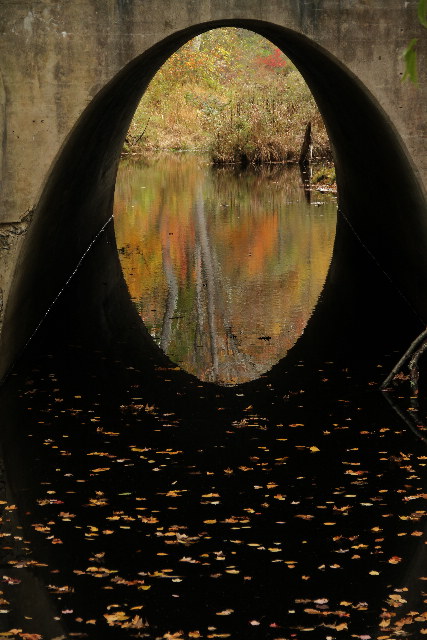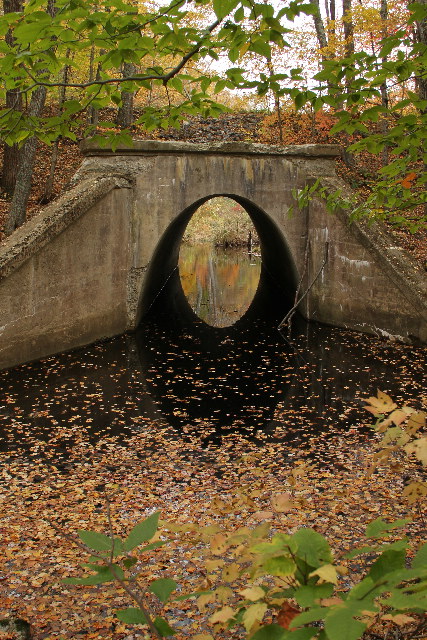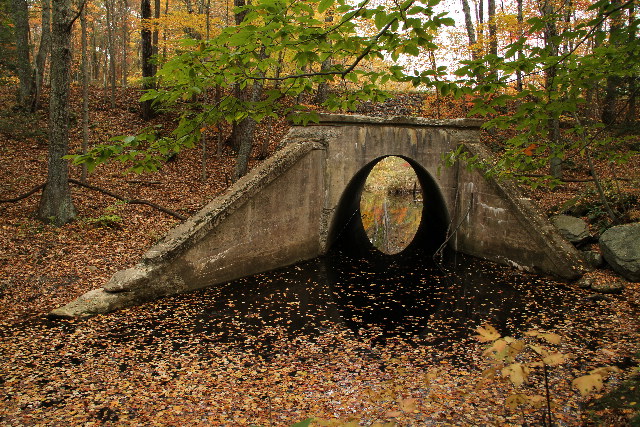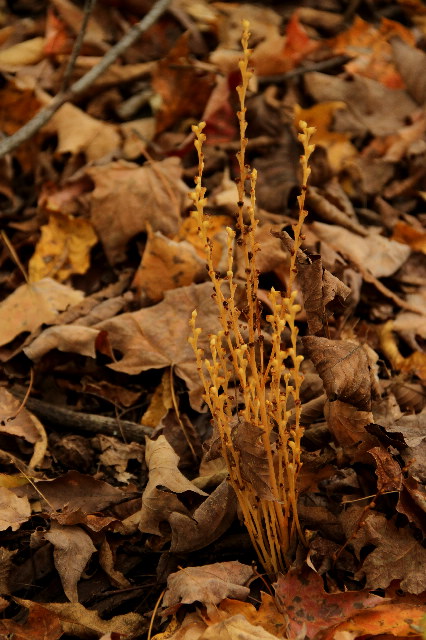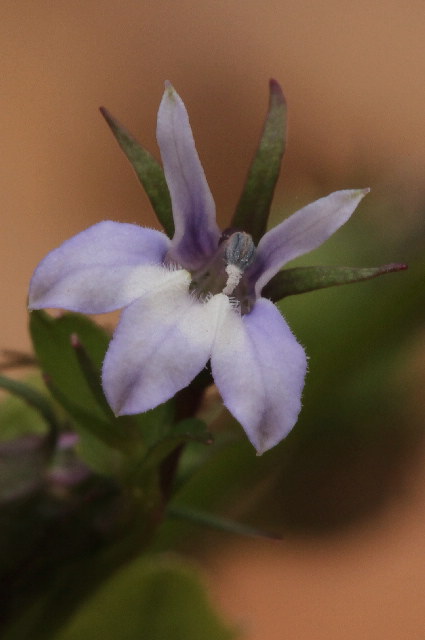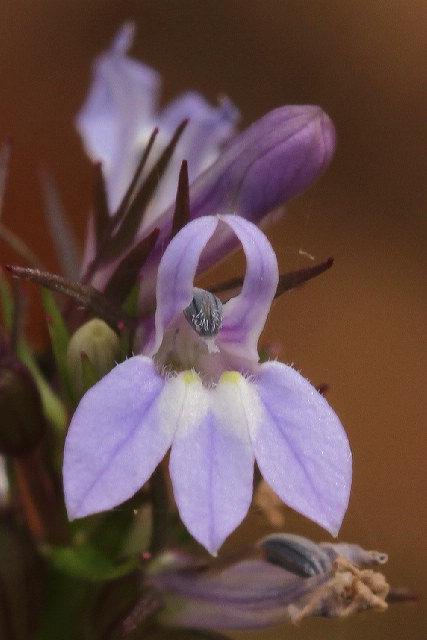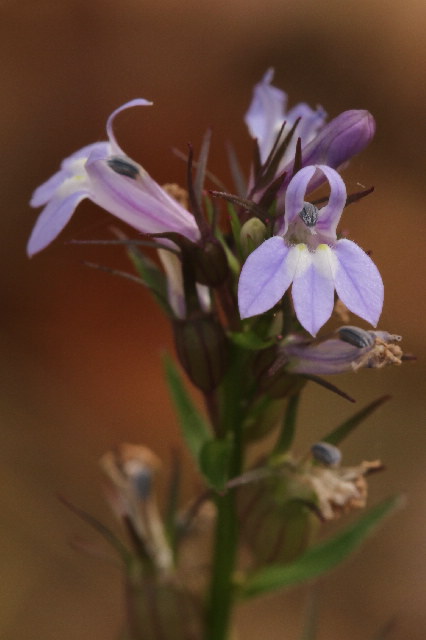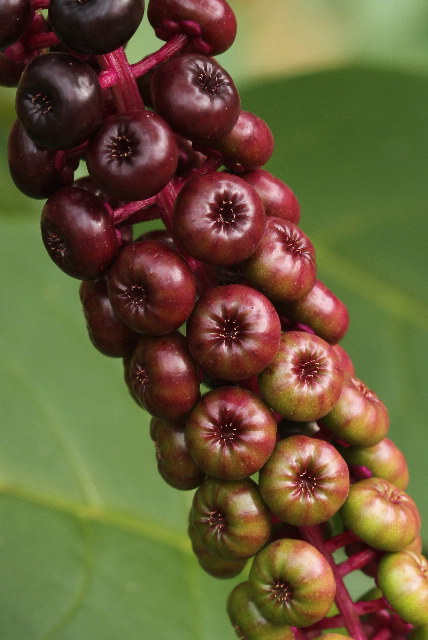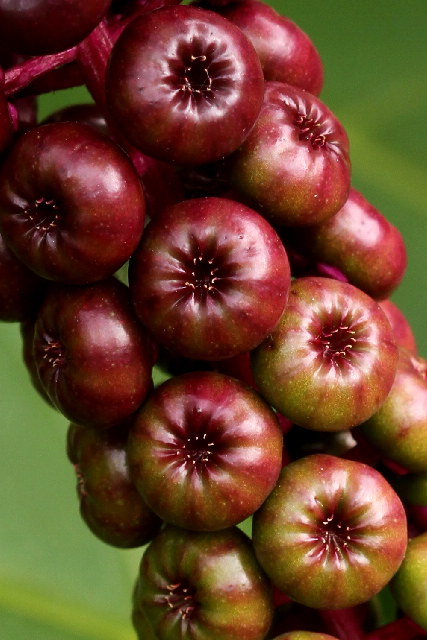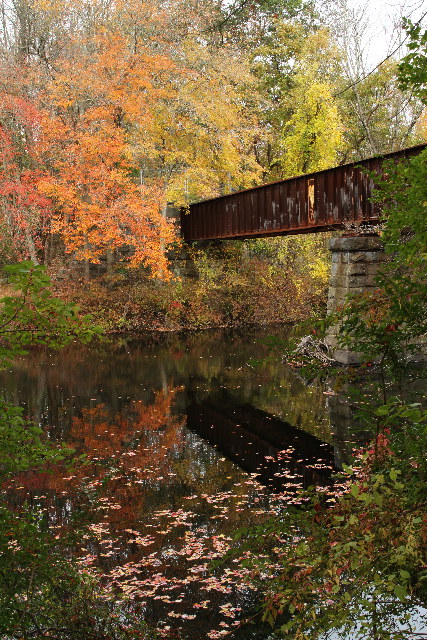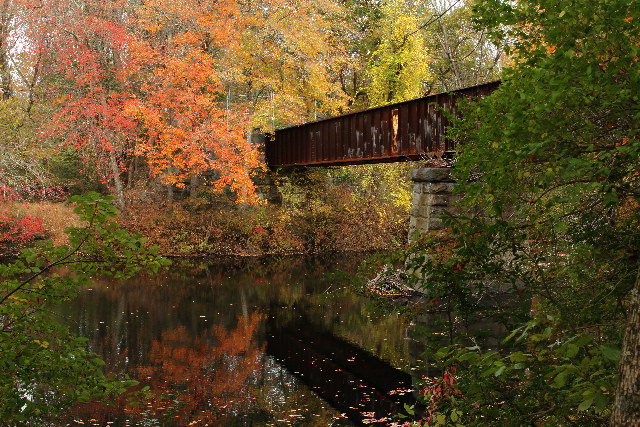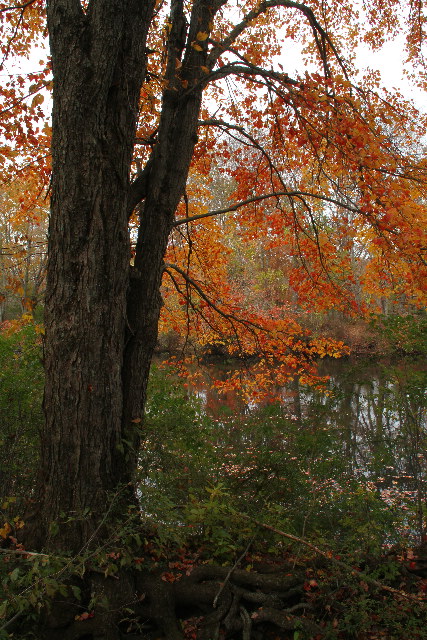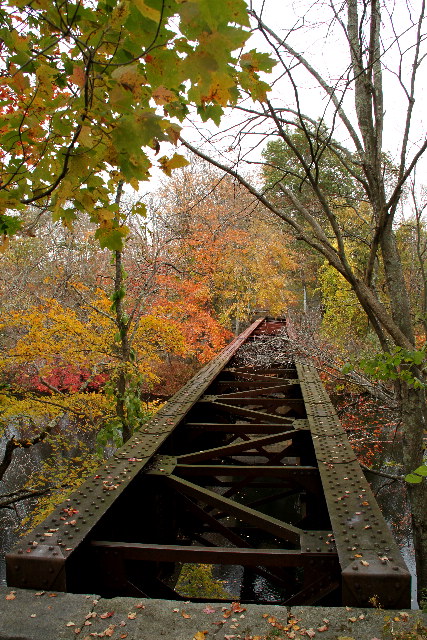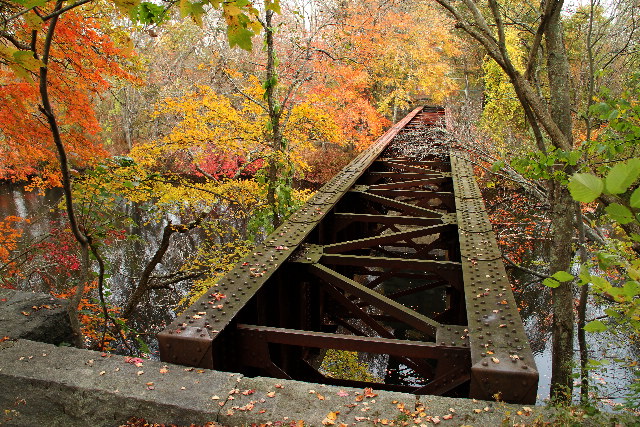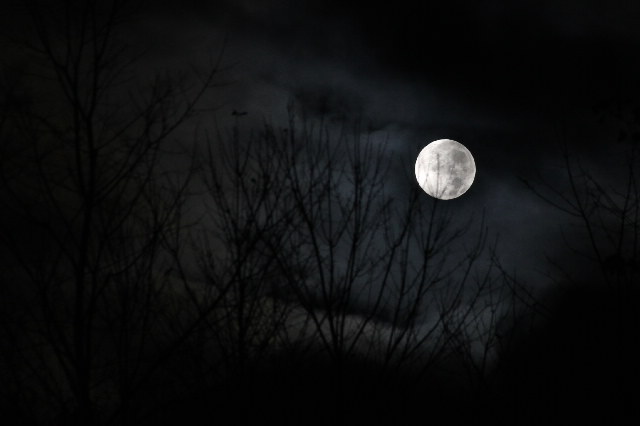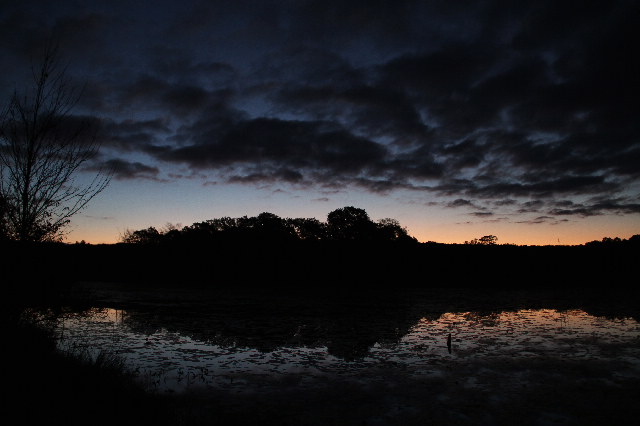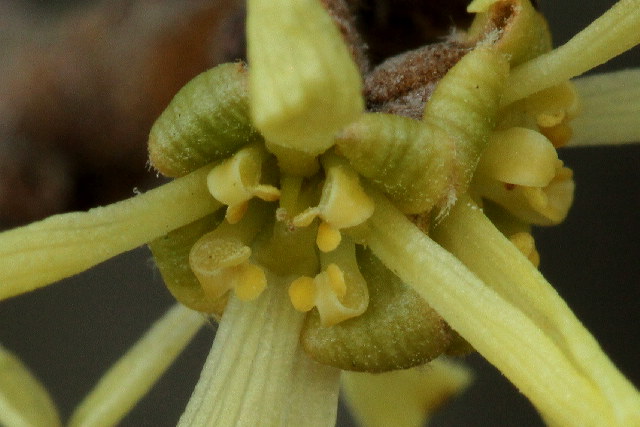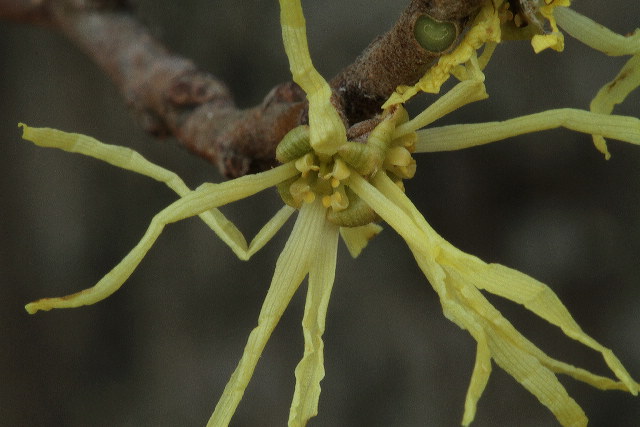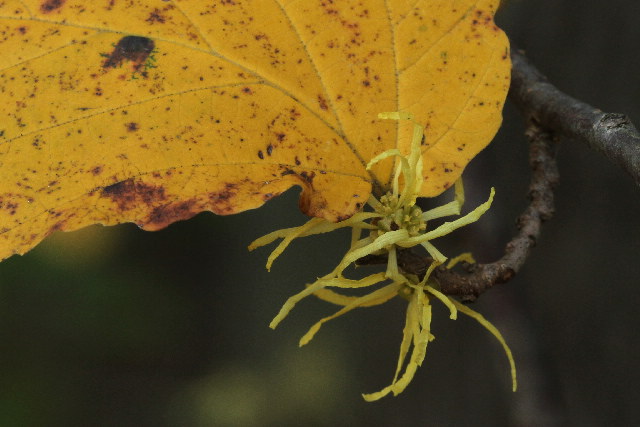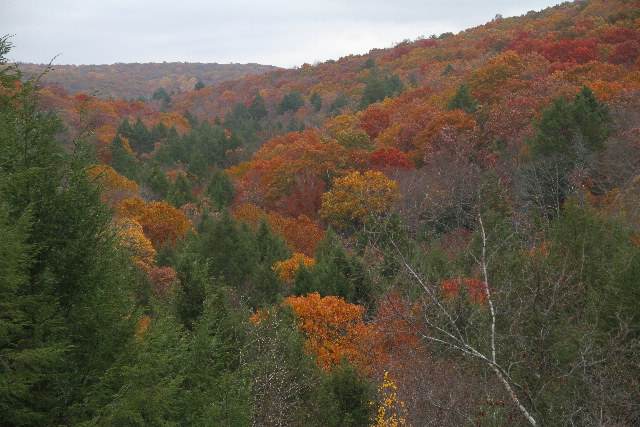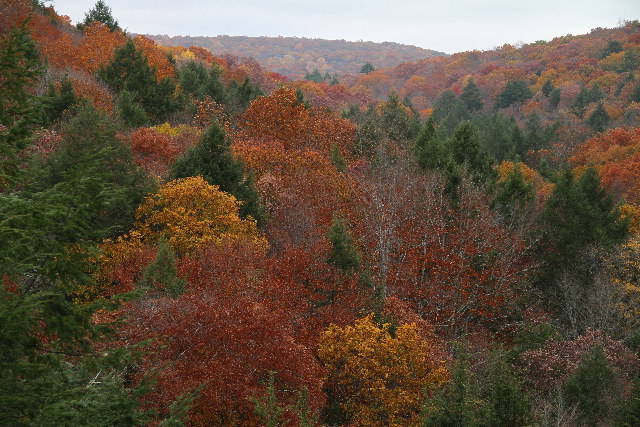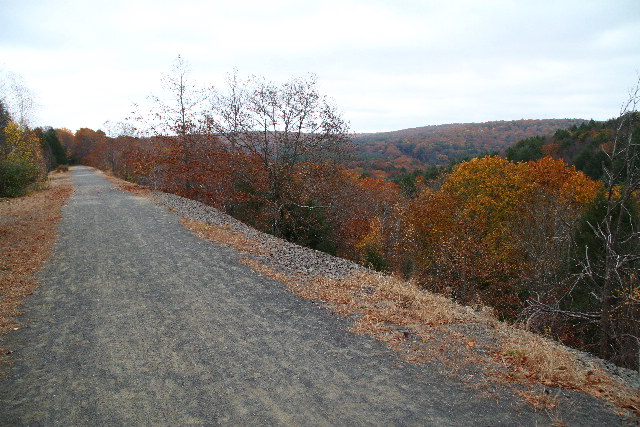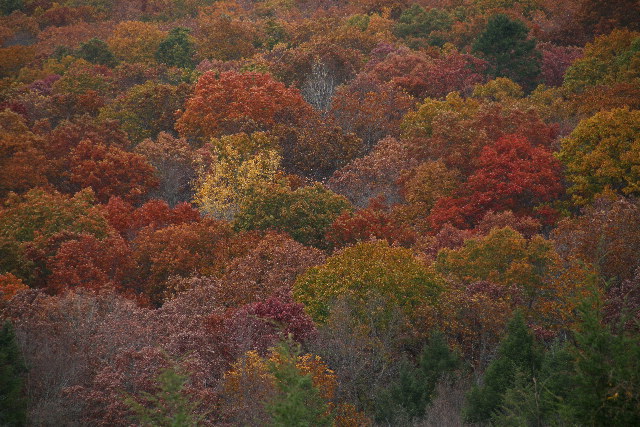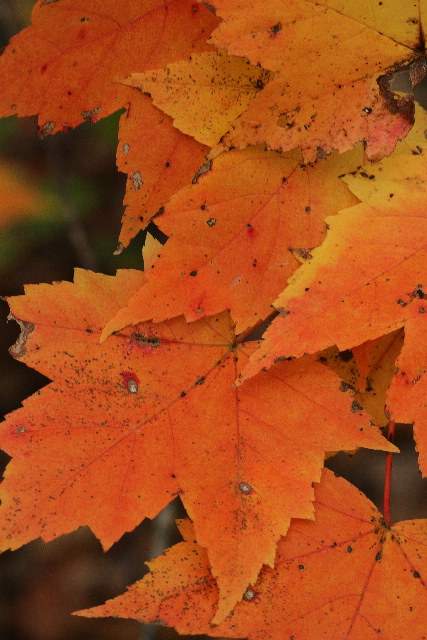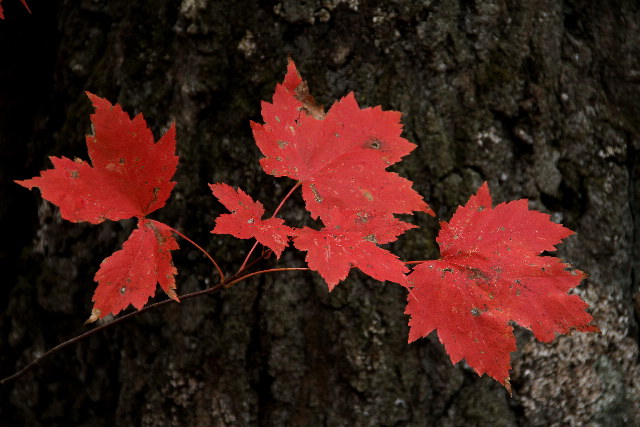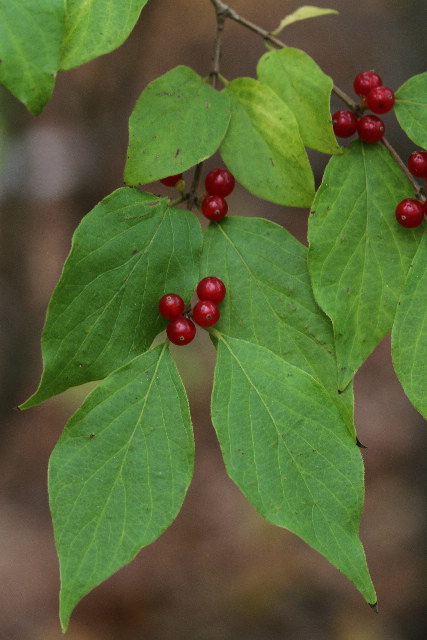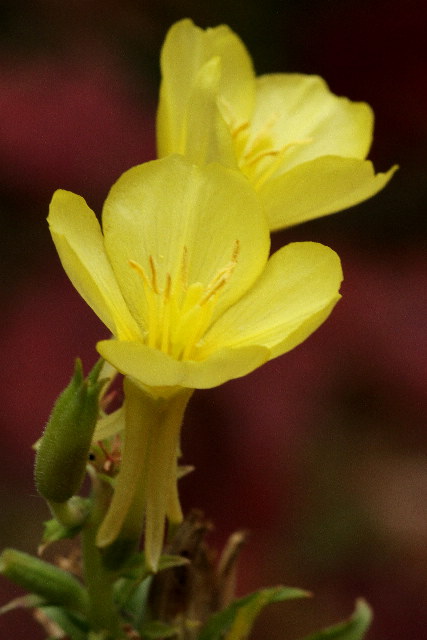Along the Air Line... 2010 - Fall, Part 4 The Air Line Trail in Eastern Connecticut - Stan Malcolm Photos |
mHome Page Stan's FlickR Albums |
October 20th. The invasive Burning Bush (Euonymus alata) near the Route 85 trailhead. |
|
|
|
|
Maples in multiple hues. |
|
|
Oaks are starting to turn. |
An afternoon walk east from Route 87 in Lebanon. |
Reflections... |
framed... |
|
|
...in a bridge abutment. |
Walking on the trail above, this symmetry could easily be missed. Thanks to the crew in 1918 who constructed this bridge. |
Beechdrops (Epifagus virginiana) lack chlorophyll and have only scale-like leaves. The plant is parasitic on the roots of Beech trees. |
A few tiny flowers of Indian Tobacco (Lobelia inflata) reward patient observation. |
Note the flower's similar structure to the far more showy Cardinal Flower (Lobelia cardinalis). |
|
I came across some very healthy Pokeweed (Phytolacca americana) growing in the disturbed margins of a sandpit. |
|
|
The end of the line in Lebanon for now: the bridge over the Willimantic River. |
|
|
|
|
October 23rd. A pre-dawn walk by moonlight in to Raymond Brook Marsh... |
...in hopes of a sunrise that never really developed. |
I did find some Witch Hazel (Hamamelis virginiana) in bloom - the first I've ever noticed on the trail. |
Not the showiest of flowers. |
Witch Hazel twigs are harvested to distill an aromatic astringent. The largest producer of Witch Hazel is American Distillers in nearby East Hampton, CT. |
October 26th. A brief afternoon walk from Bull Hill Road to the Lyman Viaduct. |
Canopy browns of oaks predominate now. |
|
These late colors never fail to remind me of ancient tapestries. |
In the sheltered understory, Maples still show color (as do Beechs with their bright yellows). |
|
Remarkably, Morrow's Honeysuckle (Lonicera morrowsi) leaves are still green, contrasting nicely with wine red paired berries. |
I was pleased to find several Evening Primrose (Oenothera biennis) blossoms hanging in there. |
|
